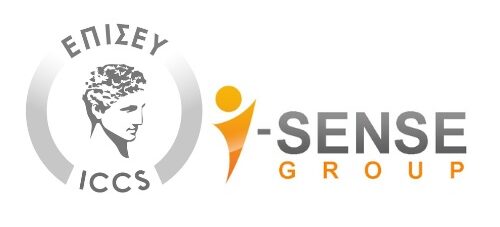Corfu Island, Greece
4-6 July 2012
More than 70 participants arrived on Corfu Island in Greece, from 4 to 6 July 2012 in order to attend the project’s Summer School. During this event project partners, stakeholders from the automotive industry and PhD students had the opportunity to discover the state-of-the-art onPerception Systems, Advanced Driver Assistance Systems (ADAS)andHuman Machine Interfaces (HMI)for safer and more efficient driving as well as the interactIVe latest developments and results.
During the six Summer School tutorials prominent speakers from academia and industry, from Europe and abroad have given very interesting and up to date presentations on a wide range of topics from sensor interfaces and fusion modules, to driver support, emergency intervention, vehicle path control, perception platforms and ADAS applications. After each session the participants had the opportunity to discuss with them the latest developments on the areas of their core research. The themes presented in the Summer School Tutorials are listed below:
Tutorial 01: Driving Environment Perception and Active Intervention on EU
During the first Tutorial the project coordinator, Aria Etemad, as well as the Summer School organizer, Dr. Angelos Amditis, welcomed all participants. In the following, an overview of the interactIVe project and its challenges, fusion in past EU projects and inside interactIVe, the continuous support of the driver functionality followed in interactIVe as well as the modeling and simulation of vehicle dynamics for active safety systems were presented.
Tutorial 02: Interaction and Warning Strategies
In the second tutorial the audience had the opportunity to learn about the State-of–the-Art in highly automated driving, the different levels of automation, the design challenges for a proper human-machine-interaction system and gain more insight in issues related to the arbitration between driver and automation.
Tutorial 03: Sensor Fusion and Automotive Applications in Practice
In the second day of the Summer School the focus was on sensor data fusion and practical automotive applications. Initially a cooperative ACC system combining sensor and V2V communication data to improve performance, driver acceptance and highway capacity was highlighted followed by a presentation of highly accurate digital maps for vehicle self-localisation using landmarks. In the following a presentation of commercial applications which exploit the benefits of sensor data fusion and a collision avoidance application based on camera and radar fusion were also presented. The tutorial closed with discussion and questions among the speakers and the participants.
Tutorial 04: Active Safety and Collision Mitigation Advanced Applications
In the afternoon of the same day the audience attended another set of interesting presentations. In the first part the focus was on decision making and threat assessment for automotive collision avoidance as well as on the actual evaluation of ADAS in the field using the example of the euroFOT project. The presentation that followed was relevant to environment perception for automated vehicles, the challenges and the future trends in this filed. Finally, the session ended with a statistical approach on how the driver perceives the threat in rear-end collisions which cannot be avoided.
T05. Sensor Fusion and Multi-target Tracking Theory (I)
During the last day of the Summer School the participants had the opportunity to learn and discuss about the advances in multi-sensor fusion and multi-target tracking theory. Specifically, advanced multi-sensor fusion methods and applications, grid based fusion and multi-sensor calibration, were illustrated.
T06. Sensor Fusion and Multi-target Tracking Theory (II)
The same afternoon the presentations focused on sensor fusion and target tracking issues continued. An enhanced situational awareness approach through multi-platform data fusion towards affordable autonomy in urban settings opened the session. Presentations concerning models and filters for camera based multi-target tracking and sigma point estimation techniques and their application in the Kalman filter framework were also discussed.
Finally, poster and demo sessions took place during the Summer School where 16 technical posters and one demonstration were available to the attendees highlighting the latest technological developments in the abovementioned fields.
More information about the interactIVe Summer School can be found in the project’s official website:http://www.interactive-ip.eu/
Co-funded and supported by the European Commission






